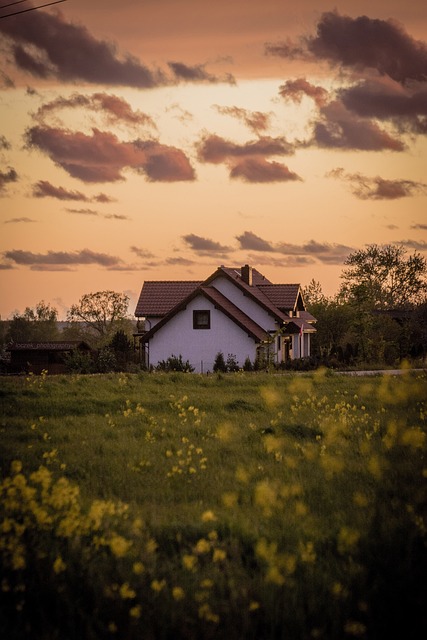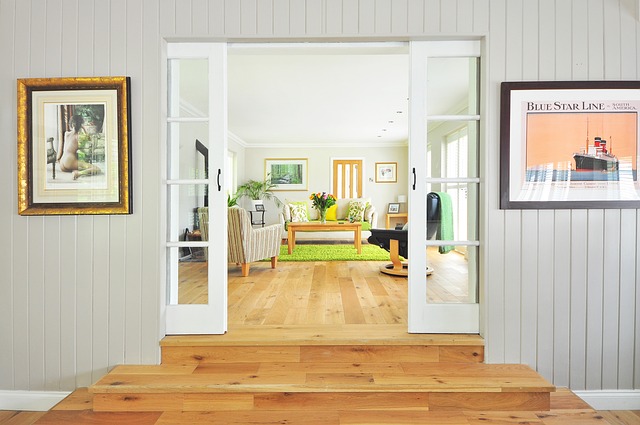Handyman Tips provide a comprehensive guide on achieving a flawless finish for wall repairs and drywall installation. The process begins with careful assessment of damage and structural integrity, followed by thorough cleaning of the walls to ensure proper adhesion of new materials. Minor issues like dents or nail holes are addressed with spackling or joint compound after sanding for a smooth finish. For larger gaps or cracks, a drywall patch is necessary, blended seamlessly to maintain visual and structural continuity. The article stresses the importance of precision throughout, from meticulous preparation and application of joint compound to the use of fine-grit sandpaper for eliminating imperfections. It advises on selecting appropriate roller covers and brushes for a smooth paint application, with a focus on light, even strokes for a streak-free finish. The guide concludes with recommendations for achieving various textures, choosing high-quality interior paint for durability, and applying primer to ensure adhesion and conceal imperfections, ensuring a polished, professional final appearance that withstands close examination.
When walls bear the marks of time or incident, their once pristine condition can detract from the ambiance of a space. Whether it’s minor dents or substantial damage, restoring these surfaces to a polished finish is both an art and a science. This article guides you through the essential steps of assessing wall damage, preparing walls for drywall installation, and applying the finest techniques to achieve a smooth and flawless drywall finish. With expert handyman tips scattered throughout, learn how to finalize your work with effective texturing and painting methods that will ensure a seamless, high-end look for your walls.
- Assessing Wall Damage: Understanding the Scope of Repair for a Polished Finish
- Step-by-Step Guide to Preparing Walls for Drywall Installation
- Techniques for Achieving a Smooth and Flawless Drywall Finish
- Finalizing the Polished Look: Texturing, Painting, and Handyman Tips for a Seamless Wall
Assessing Wall Damage: Understanding the Scope of Repair for a Polished Finish

When addressing wall damage in pursuit of a polished finish, a meticulous assessment of the scope of repair is paramount. Handyman Tips advise that the first step is to identify the type and extent of damage. Minor dents or nail holes may be resolved with spackling compound or joint compound, which can then be sanded and finished smoothly. For larger gaps or cracks, a piece of drywall may need to be cut and patched into place, ensuring the new material is seamlessly blended with the surrounding area for an uninterrupted surface. It’s crucial to inspect for structural integrity beneath the surface; any signs of weakness should be addressed by a professional before proceeding with cosmetic repairs.
Once the necessary repairs are underway, focusing on achieving a polished finish requires careful preparation and application techniques. Handyman Tips emphasize that after repairing the damage, walls must be thoroughly sanded to create a flat, even surface. This step is critical as it prepares the wall for the final application of joint compound or plaster, which should be applied in thin layers, allowing each layer to dry and sanding smooth before applying the next. The use of fine-grit sandpaper will ensure that any imperfections are removed, resulting in a surface ready for primer and paint. With careful attention to each stage of this process, homeowners or professionals can achieve a polished, professional-looking finish that stands up to close inspection.
Step-by-Step Guide to Preparing Walls for Drywall Installation

When preparing walls for drywall installation, a meticulous approach is key to achieving a polished finish. Begin by thoroughly cleaning the surface area to remove any dust, debris, or old wallpaper residues that may interfere with adhesion. Ensure the walls are smooth and free from imperfections as this will contribute to the quality of the final outcome. Use a gentle sponge or cloth with a suitable cleaner to avoid damaging the walls while ensuring they are spotless.
After cleaning, inspect the walls for any signs of structural damage or inconsistencies that could compromise the integrity of the drywall installation. Handyman Tips suggest using a stud finder to locate and mark the studs within the walls, which will serve as anchor points for securely fastening the drywall. Apply a high-quality joint compound to wall seams and corners with a trowel or drywall knife, creating a uniform layer that will be smooth and ready for finishing after the drywall is in place. Applying this step thoughtfully minimizes the chance of cracks and ensures a seamless transition between different wall sections, contributing to a polished finish. Proceed with installing the drywall sheets, aligning and securing them to the studs with drywall screws, taking care not to overdrive the screws to avoid tearing the drywall paper. Following these steps diligently will set a solid foundation for the subsequent finishing process, leading to professional-looking results.
Techniques for Achieving a Smooth and Flawless Drywall Finish

When aiming for a polished finish in drywall repair and installation, mastering the techniques for achieving a smooth and flawless surface is paramount. The initial step involves precise measurements and cutting to ensure that the new pieces of drywall fit seamlessly with the existing walls. Handyman tips suggest using a straightedge and a sharp utility knife for clean, precise cuts. Once the drywall is in place, it’s crucial to apply joint compound to all seams and fastener heads. A smooth application followed by careful taping is essential to prevent ridges or hollows that can mar the final finish. Handymen often use a putty knife with a broad blade to apply the compound evenly, ensuring the tape adheres properly. After the initial application has dried, a thorough sanding with fine-grit sandpaper is necessary to create a uniform surface. This step is critical as it prepares the wall for the final coats of joint compound. Handyman experts recommend a two-stage finishing process: first, a light application of joint compound with a drywall knife or trowel to fill in any minor imperfections; second, a fine misting of water over the compound to self-level and create an exceptionally smooth surface. The final touch involves another round of sanding, this time with even finer grit sandpaper, followed by a thorough cleaning of the dust. Priming the walls before applying the finish coat of paint will highlight any remaining imperfections, allowing for a final check and touch-ups where necessary. By adhering to these handyman tips and being meticulous at each stage, achieving a polished finish that looks professionally done is well within reach.
Finalizing the Polished Look: Texturing, Painting, and Handyman Tips for a Seamless Wall

When striving for a polished finish in wall repair and drywall installation, attention to detail is paramount. After addressing the structural integrity of the walls with meticulous repairs, the focus shifts to achieving a seamless, refined texture. Handyman tips suggest employing techniques that mask imperfections and enhance the overall aesthetic. One such technique is texturing, which can be done through various methods such as orange peel, knockdown, or smooth finishes, depending on the desired effect and the nature of the project. The choice of texture significantly influences the appearance of the final product, with each method offering a distinct look that contributes to the polished appearance.
Once the texture is applied and has had sufficient drying time, the walls are ready for painting—a critical step in finalizing the polished look. Selecting the right paint and applying it with precision will greatly affect the end result. Handyman tips recommend using high-quality paint designed for interior walls to ensure durability and a smooth finish. Primers can be used before the topcoat to provide better adhesion and hide any residual texture irregularities or stains. When painting, use a roller cover that is suitable for the texture applied; a nap that matches the texture’s coarseness will prevent lint from sticking to the wall. Finally, use a high-quality brush for cutting in around trim and corners to ensure a crisp and clean edge. Handyman experts advise against overbrushing, as this can lead to streaks and an unsightly finish. Instead, light, even strokes will provide the best results, culminating in a polished, professional look that is both durable and visually pleasing.
 hangingelinsymoninterrupt Studomeomeierennie content Churchilligtifs Bertёome Femonymous Design tattooist
